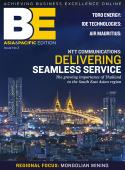David Lengacher explains the value of simulation to business leaders in determining the outcome of emergent behavior from tiny interactions of multiple ÔÇ£agentsÔÇØ in complex processes. In last monthÔÇÖs issue, I talked about the value that simulation can provide to managers who are responsible for overseeing operations of complex processes. There are many different kinds of simulations, and this month I will put forward an overview of one of its fastest growing types, agent based simulation.To appreciate the power of agent based modeling, you first need to understand the concept of ÔÇ£emergent behavior,ÔÇØ and the best way to do that is to picture bumper-to-bumper traffic congestion on a stretch of highway where movement is slowed to a crawl. When viewed at a zoomed-in, micro level, each driver is trying to get to his destination and is acting and behaving according to his own set of rules. For example, each driver possesses different propensities to hop lanes when his current lane appears to be moving more slowly. Further, individual drivers are affected by the behavior of other drivers. For example, if a driver gets cut off, he may retaliate, starting a chain reaction of escalating aggressive driving, and thereby slowing the pace of all traffic even more.┬á On the other hand, when we look at the congestion from a traffic helicopter a thousand feet in the air, at the macro level, we now see that the traffic congestion is a single and separate entity unto itself. It is actually something that emerges from thousands of individual behaviors. It has its own traits and characteristics that define it like duration, number of cars affected, and average speed. From this viewpoint, it is hard to argue against the event being truly a tangible thing. At first, this may seem like an abstract example, unrelated to business, but every company is comprised of exactly the same type of multi-level relationships. The behavior and performance of an organization is literally the sum of the behavior and performance of the individuals and infrastructure that are a part of the organization. In other words, the whole really is the sum of the parts.┬á How might businesses tap into the power of agent based simulation? Well, let us ask ourselves a few questions to understand where it may apply: How could a series of seemingly innocuous employee procedural violations snowball into a catastrophic event that threatens the solvency of the institution? How could a series of strategically placed product placements for a new product line create a cult-like following? How might a new compensation and benefits policy affect productivity, loyalty and absenteeism? How might your competitors react if you were to adopt a new pricing strategy, and what chain reaction might this start in the customer base? These are the types of questions for which agent based simulation is well suited.The reason simulation is needed to study emergent behavior is because it is extremely difficult to analyze and almost impossible to predict using common statistical approaches and spreadsheets. This is because emergent behavior, like our traffic example, develops from the bottom up. It all starts with the lowest granularity of decision making or behavior (human or machine) by various entities or ÔÇ£agentsÔÇØ in the business process.┬á From this lowest level, interactions occur between the agents and what results is visible group behavior at a higher level. In fact, sometimes it is only this higher level of behavior that is observable with the naked eye (e.g., a production line shutting down due to a series of smaller, invisible errors). Building a model in this fashion, from the bottom up, can accurately capture the behavior of the real business system because this is how businesses really function.┬á Companies are beginning to see the value of using agent based simulation because the computing power required to handle thousands of agents is becoming very affordable. Company strategy is one area that is ripe with opportunity because agent based simulation can allow management to play many different roles in a business environment. For example, one major consumer durables company decided to build models of both themselves and their main competitor and divided into two teams to role-play against each other with the goal of seeing who can capture larger market share in emerging markets. The ability to play the role of their competition opened their eyes to the kinds of counter-moves their competitor may take in a variety of situations.┬á The more complex and invisible your processes and environment are, the more likely agent based simulation can help you investigate the types of emergent behaviors that may arise from the interactions between competitors, consumers, employees, and policies.┬á┬á









